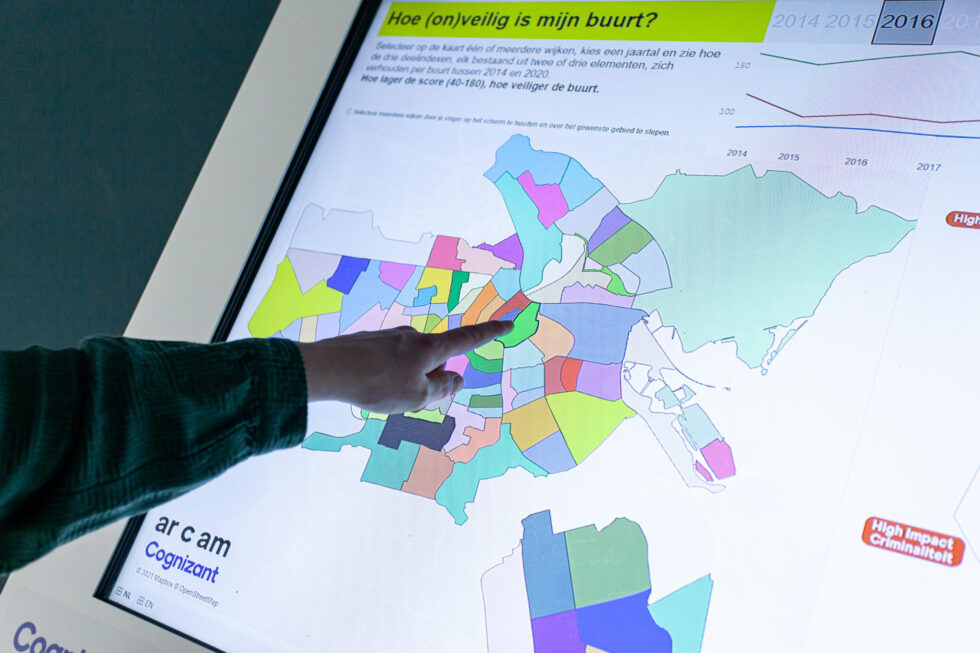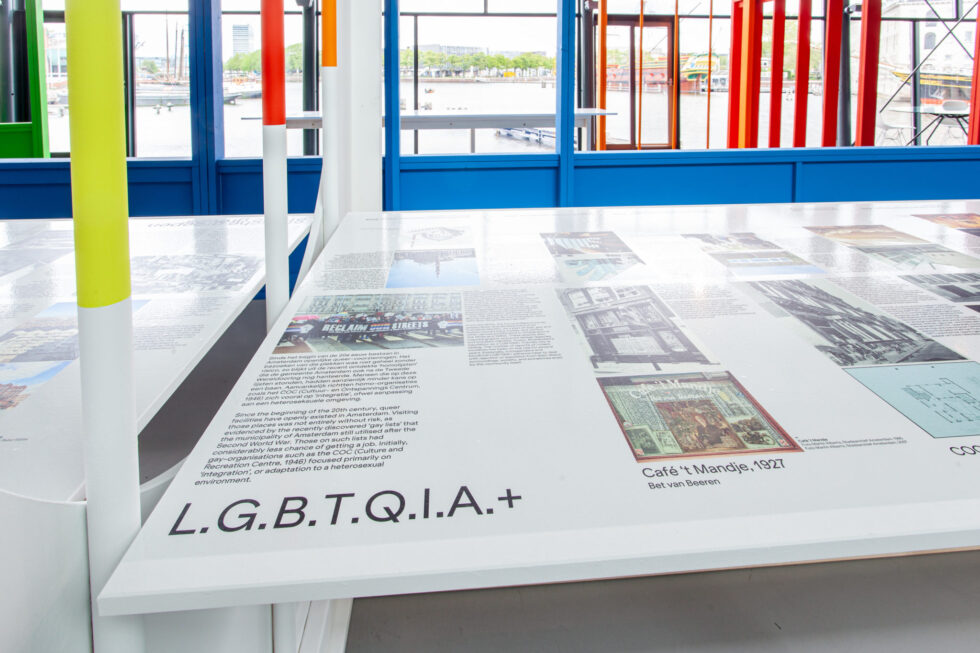
Whoever says Amsterdam thinks of a tolerant city where countless cultures and subcultures live side by side. After all, that is what the city is known for. However, Amsterdam’s architectural history also shows that not everyone is always given the same space to be themselves. Architecture centre Arcam examined the role of allocation of physical space on the well-being and visibility of different groups for the new exhibition Safe Spaces – Right to Space in the City. Amsterdam – Divers & Inclusive had a conversation about this with Isanne Damen and Indira van ’t Klooster of Arcam.
Many people think of crime when they hear the word ‘security’, but you look much further. What does space (or the lack of it) mean for the safety and livability of minorities?
The right to space does not come naturally to everyone. For example, if you, as a believer, have no place where you can pray and congregate, that says something about your position in society as well as how (un)wanted you feel as a citizen. That position, incidentally, is not static. The identity that once could only be expressed in a hidden attic (Ons’ Lieve Heer op Solder) or in a cellar (Mosque Al Kabir) can at another moment become part of visible and permanent architecture (such as the Posthoornkerk or the Westermoskee). For believers, this sends a certain signal: if ‘my building’ is allowed to be there, apparently ‘I’ can be there too. Monuments sometimes provide a concrete place to give groups the recognition they were previously denied, such as the Gay Monument for the LGBTQIA+ community (1987). Again, when your identity is given a physical place in the city, it brings a sense of recognition and safety. Conversely, if you have to live ‘secretly’ or in invisibility, that does not benefit the safety and liveability of the city for you. Buildings are thus literally a proof of social recognition of a certain group at that moment, but also a way of introducing people to fellow citizens with different beliefs or lifestyles. This contributes to mutual understanding. This applies not only to religious buildings; a place like the Oranjehof for single, working women (1942) is a good example. When it opened, that building was very special, today we can hardly imagine that such a building would be needed.

How is diversity and inclusion faring in Amsterdam architecture?
Our Architect in Residence Lyongo Juliana researched this and made a 14-minute mini-documentary about it that I can recommend to everyone. An important part of contemporary problems is gentrification* in many Amsterdam neighbourhoods. Gentrification has made the city too expensive, even for modal incomes, and families are moving out of the city. Status holders are placed in cheap, temporary housing on the outskirts of the city, which not only says something about their status in society, but also makes it difficult for certain groups to interact.
What is the difference between being safe and feeling safe?
Safety in the city is measured using hard and soft data. It covers crime and violence, but also nuisance, neglect and the design of public spaces. Hard data are collected from reports and police reports. Soft data is collected through surveys. These ask, among other things, whether people avoid a certain place. A low-crime neighbourhood is not necessarily a place where people feel safe. This is exactly what our partner Cognizant shows in an interactive map developed especially for this exhibition about safety in Amsterdam in 2020 compared to 2014.
Can you give examples of neighbourhoods where being safe and feeling safe do not match?
Cognizant’s map shows that people feel very safe in the city centre, around the Burgwallen, while reports of nuisance and street robbery are very high there. The exact opposite happens in Reigersbos, for example. There you see people feeling unsafe and avoiding places, while nuisance and crime rates are low there. Between 2014 and 2020, the nuisance and crime rates in Reigersbos dropped, while the perception of unsafety worsened. In the Safe Spaces exhibition, a study in Reigersbos by the Hogeschool van Amsterdam shows this same picture. The college puts the cause of this feeling of insecurity partly on the urban planning of the neighbourhood, where no pleasant routes between residential houses and the centre were designed.
What can architects, urban planners and building engineers do to ensure that all residents of Amsterdam feel safe, seen, understood and recognised? In other words, what does it take to make Amsterdam a more inclusive city?
We posed a similar question to designers of public space in the municipality of Amsterdam. How do you incorporate social safety into your designs? It turned out that they have no specific guidelines. The Amsterdam municipality takes a functionalist, generic approach: public spaces use cameras, surveillance and adequate lighting. So it’s mainly about physical safety. Arcam’s questions to the designers did generate discussion. In retrospect, for example, the designs for Mahlerplein or Arenaboulevard were judged to be somewhat one-sided, and designs are now increasingly being made for specific groups, rather than as generic as possible. A good example of this is the skate park on Zeeburgereiland. The very fact that the place is intensively used by a specific user group means that the square is also appreciated by others.
What does a safe, tolerant city look like?
You can see that on the top floor of the exhibition. Studio Ninedots has made models of free spaces, which they call Wandervoids. Places in and around buildings that have no fixed function, but instead can be used by anyone for something temporary, an event or for a place of silence. There we also show what a feminist city actually is: an urban environment where everyone is taken into account in public spaces, parks, shops, streets and buildings. My favourite is Bogomir Doringer’s installation: he shows that the quality of nightlife is perhaps the most important breeding ground for a fair, tolerant city. Dancing is not just literally a movement with your body that expresses who you are or want to be. That space for self-expression also creates the possibility for collective freedom. So you see that in authoritarian regimes, political movements often emerge from nightlife, frayed edges and subcultures.
The Safe Spaces exhibition can be visited at Arcam Architecture Centre until 19 September 2021. Want to know more? Click for this, a
preview *Gentrification is ’the improvement of a neighbourhood by wealthy newcomers'(*Van Dale). Reading tip: Massih Hutak wrote about gentrification in Amsterdam Noord You didn’t discover us, we were always here.
